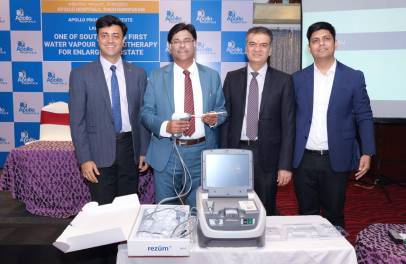Photodynamic Therapy
What is the Photodynamic therapy?
Photodynamic therapy is a kind of phototherapy that combines light-sensitive medicine and special kind of light to destroy abnormal cells. These light-sensitive medicines (photosensitizer) are non-toxic until they are activated by a specific wavelength of light energy. After light activation, the photosensitizer becomes toxic to the targeted area of tissue. Photodynamic therapy (PDT) is also known as photochemotherapy or photoradiation therapy.
Why is it done?
Photodynamic therapy (PDT) is used to treat various diseases and conditions like:
- Acne
- Warts
- Psoriasis
- Actinic keratosis
- Rosacea
- Certain types of cancers (e.g. skin cancer, esophageal cancer)
- Age-related macular degeneration etc.
What happens during the procedure?
Generally, PDT is performed as an out-patient procedure and no hospitalisation is required. Anaesthesia is not given unless the area being treated is inside your body. The entire treatment can be divided into two stages. In the first stage, the photosensitizer is administered into your body through intravenous (IV) method or needle. After injecting the medicine, you will be asked to come after few hours or days (known as drug-to-light interval), as by that time most of the medicine would have left your body, except in abnormal cells where it stays longer.
During the second stage, your doctor will apply light to the affected area. While treating certain types of cancer, your doctor may use a flexible tube (known as endoscopes or bronchoscopes) to send special light. The light causes the medicine to react and form a special form of oxygen molecule that destroys abnormal cells.
How long will it take?
Photodynamic therapy is usually done as an out-patient procedure and takes few minutes to an hour. If required, PDT may also be repeated. PDT is sometimes combined with surgery, chemotherapy or radiation therapy.
What happens after the procedure?
If PDT was done in an out-patient setting you can go home after sometime. In some cases, overnight hospital stay might be required. The site of treatment will be covered with a bandage. The treated area may have some redness, which will eventually go away on its own. You need to avoid exposure to sunlight. Once you are allowed to remove the bandage you can wash it and gently pat it dry. A follow-up appointment will be arranged to check if the treatment was effective or needs to be repeated. It usually takes 2 – 6 weeks for the site to completely heal.
Apollo Expertise in the Procedure
Apollo Hospitals is known to bring advanced technology and we excel in accurate diagnoses and treatment of skin, hair and nail disease and disorders. The hospital is renowned for its highest standards in all aspects of healthcare and patient satisfaction.
Get in touch
To consult to our Dermatologists, click here
FAQs
What are the benefit of PDT?
- No long-time side effects.
- Less invasive.
- Usually performed as an out-patient procedure.
- Precisely targeted.
- Minimal to no scarring after treatment.
- Improves tone and texture of skin.
What are the aftercare I should follow during recovery?
- Stay indoors and avoid the sun. Avoid even bright indoor lights for next 48 hours after treatment.
- Keep the treated area clean, dry and covered.
- Don’t scratch. If you feel dryness, use a mild moisturiser or as prescribed by your doctor.
- Your skin can appear red for few days. If it continues, inform your doctor.
Who is not suitable for photodynamic therapy?
Photodynamic therapy (PDT) is not suitable if:
- You have certain blood diseases.
- You are extremely sensitive to light or burn very easily.
- You have large cancers or tumors deep under the skin or if the cancer has spread.
- You are pregnant, in which case, please inform your doctor.
UPDATED ON 03/09/2024
Apollo Highlights & Updates
 Apollo Prostate Institute Launches South India’s First Water Vapour Thermotherapy for Enlarged Prostate....
Apollo Prostate Institute Launches South India’s First Water Vapour Thermotherapy for Enlarged Prostate.... Call Us Now
+91 8069991061
Book Health Check-up
Call Us Now
+91 8069991061
Book Health Check-up





